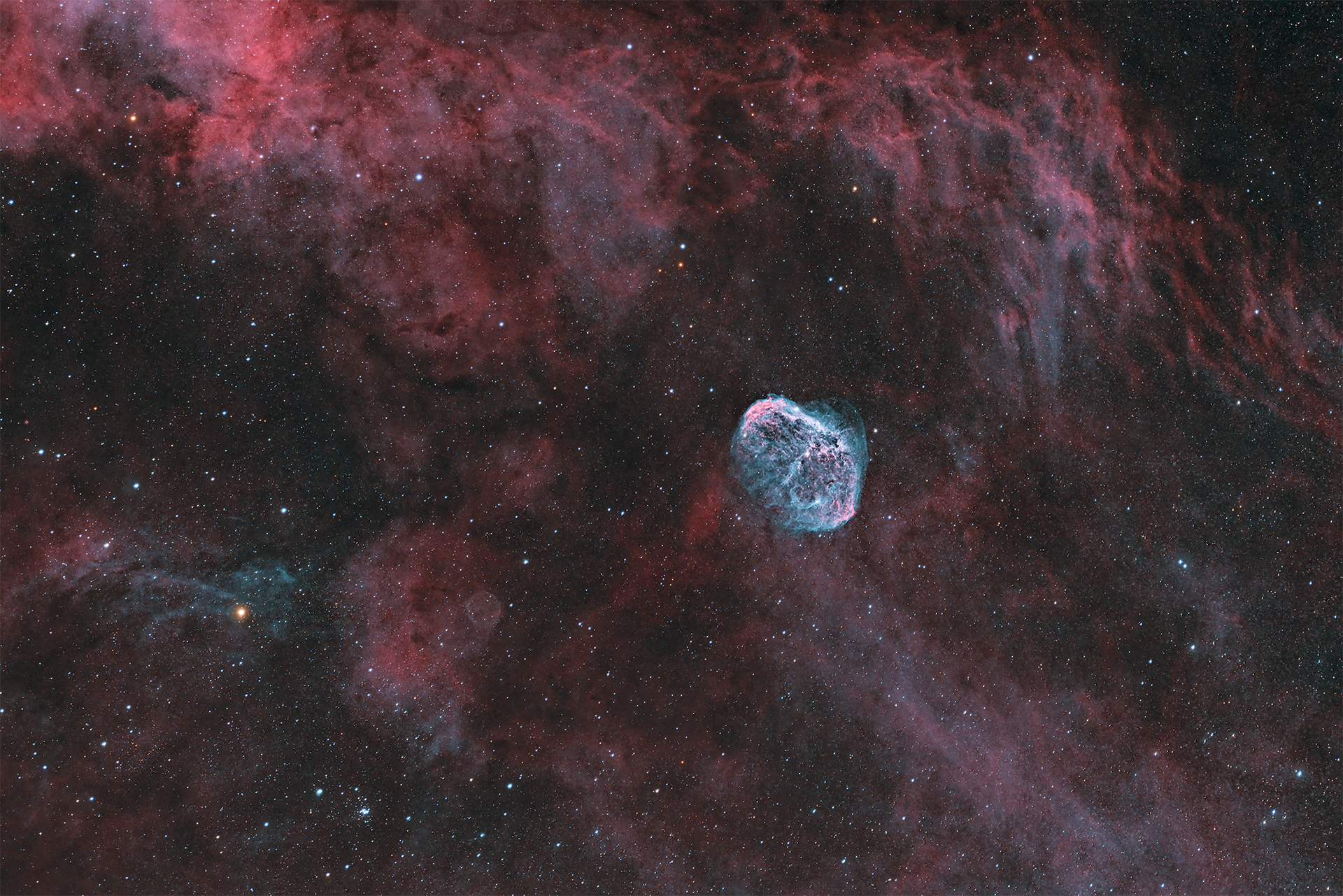EarthSky Community Photos
Submit your photo here. Comment or upvote on photo pages. Search via photographers' names. More improvements coming! To help, please donate.

Eden, NY, USA
11:00 pm
Telescope: Explore Scientific ED80 Essential Series Air-Spaced Triplet Refractor
Camera: ZWO ASI2600MC Pro
Filter: Optolong l-eXtreme
Mount: Sky-Watcher USA EQ6-R Pro
Exposure: 55 exposures at 180 sec / Gain 100 / Offset 50 / -10°C each for a total exposure of 2.75 hours. All pre and post processing in PixInsight. Blink, Subframe Selector, WBPP, ABE, SPCC, BlurXT, NoiseXT, HT, StarXT, Narrowband Normalization (see image description below), CT, SCNR, LHE, MMT, DSE, Pixel Math, & Star Reduction
Tuesday 10/3/2023 was forecast to be the last clear night we would be getting for a couple of weeks. With a bright Moon rising around 9 PM and it being a work night, I picked a bright target that was suitable for narrowband and wouldn't need a lot of exposure time. The target selected was NGC 6888, The Crescent Nebula (I see a floating space brain). While imaging, I was also connected via Zoom with other members of our Astronomy club who image. As a result of a conversation with one of the members of the group, I decided to try the Narrowband Normalization Process in PixInsight. The result is this HOO color palate.
NGC 6888 is an emission nebula located in the constellation Cygnus. This object is close to the star Sadr. This object is formed by the strong stelar wind from a Wolf-Rayet star (WR 136). The star is losing its outer layers at the rate of the mass of our Sun every 10,000 years. This fast moving wind is colliding with a slower moving wind ejected from the star some 400,000 years ago. The resulting shell is about 25 light-years across. The star is likely to go Supernova some day in a million or so years. NGC 6888 is about 4,700 light-years from Earth.








